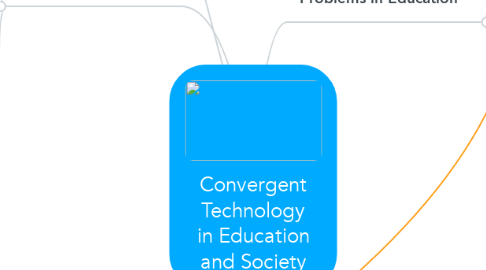
1. Problems in Society
1.1. Poor living conditions and adverse impacts on the ecosystems and global environment.
1.1.1. Challenges
1.1.2. Maintain life security preserving social values and taking into account Earth's limited resources.
1.1.3. Inclusive social and economic development, environmental sustainability and peace and security.
1.1.4. Convergence solutions
1.1.4.1. Renewable energy generation
1.1.4.2. Low-water food agriculture models
1.1.4.3. cheaper and wider access to health care
1.1.4.4. climate stabilization
1.1.4.5. Sustainable community thinking
1.1.4.6. Integration of social scientists and average citizens
1.2. Also, Finally, quality and cost of healthcare.
1.2.1. Low cost procedures for averting diseases
1.2.2. Side effects reduction in medicines
1.2.3. Improvement of wellness and human capacity through convergence of medicine with NBIC technologies
1.3. Limited access to technology and underrated democratization policies
1.3.1. More available, inexpensive, pervasive and costumer-oriented robotics technologies
1.3.2. Direct application of robotics in human lives (robotics for education purposes) with new combinations of NBIC technologies.
1.3.3. Development of more democratic rules and policies due to CKTS enabling better and more sustainable quality of life
1.3.4. Proactively addressing of long-term ethical, legal and social issues
1.3.5. Integration among earth-scale systems such as: transportation, communication, management, knowledge and monitoring in order to fulfill global cognitive and bio-physical needs
1.3.6. Personalized education and self-regulating convergence within communities
1.3.7. Providing cognitive and social support to individuals according to their needs through robotics and other technologies.
2. Cognitive Society
3. Problems in Education
3.1. Disciplines and levels have poor interactions among them
3.1.1. Challenges
3.1.2. The creation of a cross-disciplinary approach that allows the integration of levels and disciplines
3.1.2.1. Better designs for science tools
3.1.2.2. Improved education for future scientists
3.1.2.3. Insights to help science teams
3.1.2.4. New principles for convergence in science
3.2. Lack of affordability of digital information aids and its actual implementation
3.2.1. Partnership among community colleges and universities with physical and technological resources
3.2.2. Convert digital information aids into affordable, interactive personalized education for all.
3.3. Education isn't focus on problem-solving situations
3.3.1. Restructure of approaches from low to high levels of education in order to solve societal problems.
3.4. Behavioral/social sciences are only center on phenomenological observation
3.4.1. Behavioral/social sciences based on physical/chemical laws and quantitative evaluations. Also connect social sciences into NBIC fields.
3.4.1.1. Expanding citizen science and creating "citizen social science"
3.5. Insufficient engagement of public in general into science
3.5.1. Extensive networks of education and science to attract larger masses.
